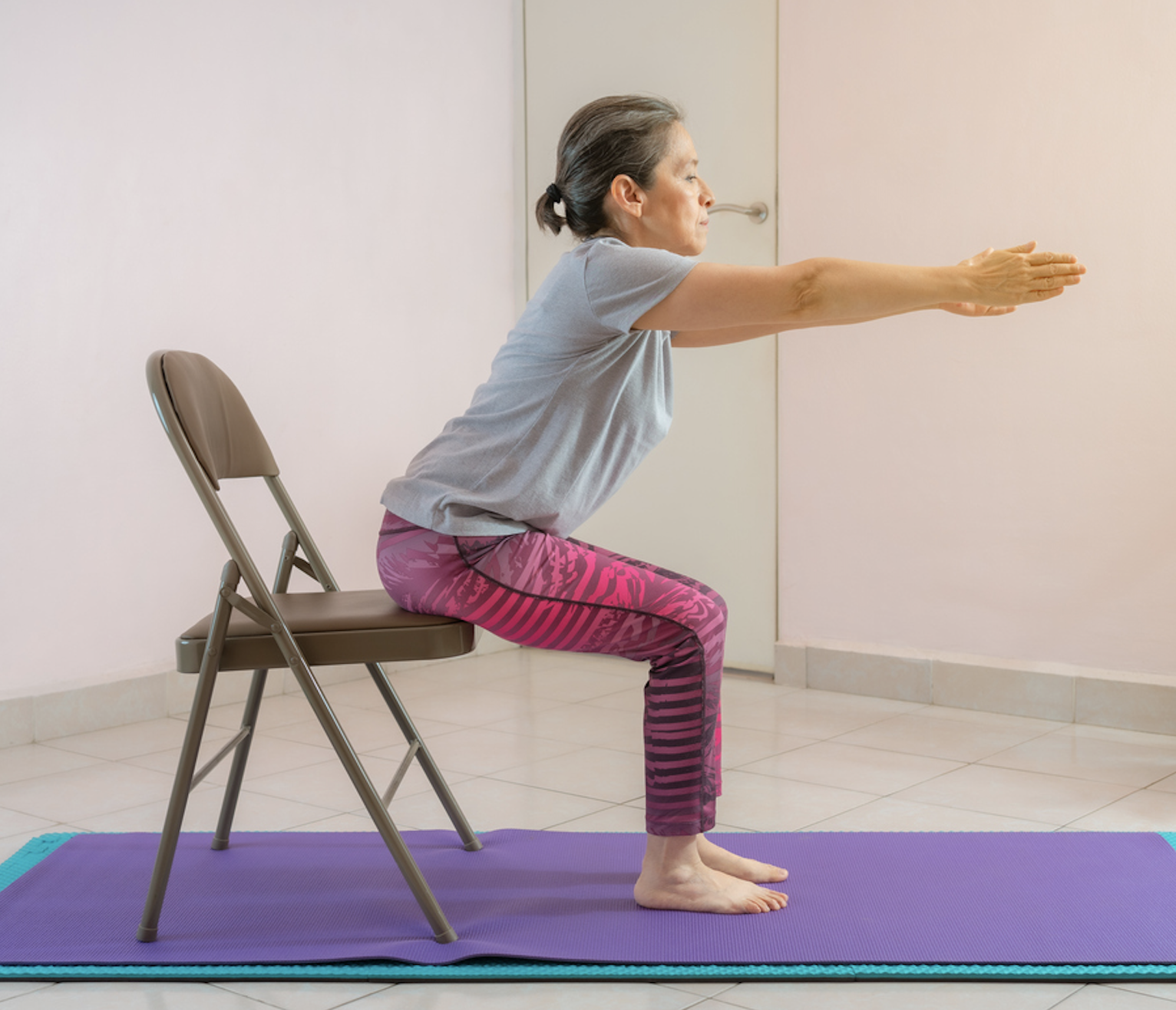

By Louise Applebome
At the start of my yoga classes, I often poll my students to see if there’s something special they’d like to work on that day. Common replies are: lower back, neck and shoulders, and balance.
Here’s the reality: There are designated yoga poses, stretches, and exercises to address lower back issues (whatever those might be and they vary, of course); and there are specific stretches, poses, and positions that relax and release tension in the neck and shoulders.
But, whenever I hear, “Let’s work on balance,” I remind students that *everything* we do in yoga addresses “balance.”
The word “yoga” translates to harmony and yolking together all and every facet of an individual to find balance, stability, equanimity, and equilibrium. Yoga, at its very core, helps us to find balance on and off the yoga mat.
We know that falling is a great fear and hazard, particularly as we age. Often a fall can be attributed to not paying attention or letting the mind wander. It may also result from weakness. Damage might be greater and/or even fatal for those with poor leg strength, limited flexibility, lack of nimbleness, and porous bones.
Yoga is all about paying attention and staying conscious, present, and alert. Yoga is all about strengthening the mind and the ability to concentrate and to be aware of one’s surroundings.
Yoga is also all about strengthening the body, including the legs. Standing poses, in particular, strengthen the legs and the mind and build bone mass to help fight off osteoporosis.
And from the moment we sit on a few blankets or pillows in a cross-legged position or in a chair at the start of class, the quest toward better balance begins.
The moment we begin class and carefully establish a safe, comfortable, and peaceful pose, the brain is being trained to be attentive and to listen very carefully to everything and anything a student is experiencing at that moment.
Don’t get me wrong. I’m well aware that it’s human nature for the mind to wander. But with an ongoing yoga practice, we learn again and again to refocus our attention and to be mindful in the moment.
I realize that when students say, “Let’s work on balance,” they often mean, “Let’s do tree pose.” And tree pose, one of many standing poses, builds strength and requires concentration. If, while standing on one leg, the eyes start to dart around the room and the mind gets distracted, it becomes very difficult to hold the pose. The same can be said about all standing poses. Concentration is required to avoid collapsing into a heap. Strength is required and improves through frequent repetition of standing poses such as Warrior I, II & III; triangle; extended side angle; pyramid; half moon; as well as tree pose.
And there are variations of these poses that might include holding onto a chair or having your back leaning up against a wall. Yoga blocks are often useful, too. Poses and protocols can be adjusted depending on the yogi’s range of motion, experience, strength, etc. More advanced students might be able to hold a pose longer. Safety and stability are essential. There’s no one-size-fits-all solution to a yoga practice. This is part of its awesomeness. Your practice must adapt to your abilities, hardiness, and vigor.
But it’s a bit disingenuous to suggest that yoga’s tree pose is the magic bullet for cultivating good balance. It is the overall strength, flexibility, fitness, and relaxation that yoga fosters that is required. By better aligning the body, improving posture and the mind/body sensitivity we’re less likely to topple and have lesser effects/harm if we do.
Plus, a regular pranayama practice must also be part of the equation on route to better balance. These breathing exercises and techniques also affect the mind, brain, physiology, and emotions. If practiced on a steady basis, pranayama brings the mind and body to greater levels of ease. This, too, allows for clarity, heightened awareness, and reduced anxiety and stress. Lives can be quite chaotic. Pranayama, done safely, brings some calm to the storm.
So there is no one-stop-shop for preventing falls and working on balance. Mind, body, and breath must all be included in a holistic approach to surer footing, sharper brains, and staying safe.
Namasté
Louise Applebome, 69, is a Certified Yoga Instructor in Dallas. After “retiring” from a vibrant and varied professional career, she became a yoga teacher. She teaches all her classes on Zoom right now and accepts students, young or older, from wherever they are, both geographically and in their pursuit of a yoga practice. Louise will help you stay fit and flexible, and release tension, aches & pains from the body…and the mind. Her yoga studio in Dallas is del norte yoga. You can reach out to her at [email protected].